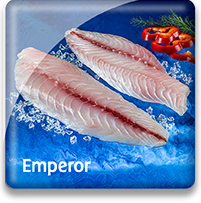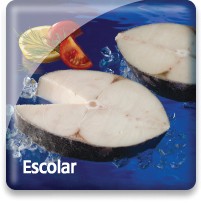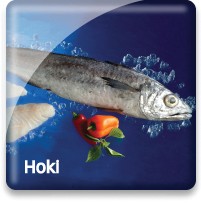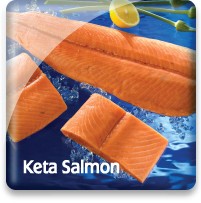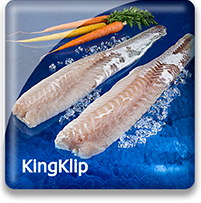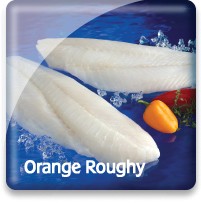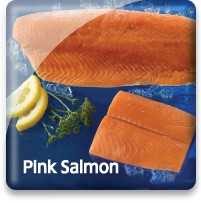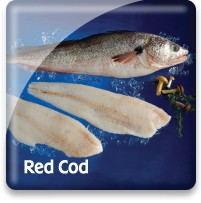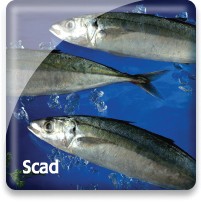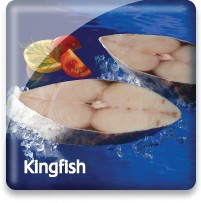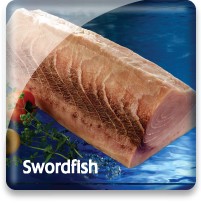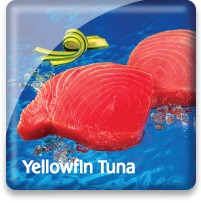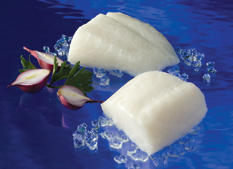
Chilean Sea Bass & Toothfish

Market Name(s):
Eating QualitiesChilean Sea Bass is coveted by chefs and gourmands alike. The high oil content results in exceptional taste and texture. The thick fillets are pure white, moist, and flaky. An excellent candidate for grilling, Chilean sea bass is also great baked, broiled, sautéed, or fried.
Toothfish is a deep water species, often found in water as deep as 10,000 feet.
The toothfish fishery is the most valuable fishery in Antarctic waters.
|
Description & CharacteristicsChilean Sea Bass is not caught exclusively in Chile nor is it a bass or a single distinct specie. Chilean Sea Bass is the FDA approved market name for two species in the genus Dissostichus: eleginoides and mawsoni. In August of 2013 the FDA recognized these two species as Chilean Sea Bass. These species are caught in the South Atlantic, Pacific, and Indian Oceans and in the Southern Ocean, around Antarctica. D. eleginoides is sometimes marketed as Patagonian Toothfish and D. mawsoni as simply Toothfish. Because these two species are essentially identical, calling them both Chilean Sea Bass is now appropriate, preferred, and FDA approved.Chilean Sea Bass do not mature for eight to ten years and can live as long as 40 or 50 years. They can reach six to seven feet in length and can weigh over 250 pounds. Common commercial sizes are about two and a half feet long, and weigh about 20 lbs. Fish are generally sold headed and gutted (H&G), skin-on, and boxed or toted:4–6 kg, 6–8 kg, 8–10 kg, 10–12 kg
Larger fish are difficult to handle and are typically sold in totes: During the mid 1990s fishing for Chilean Sea Bass dramatically increased. Since then, the fishery has been highly managed by a 24-member country commission; The Conservation of Antarctic and Marine Living Resources (CCAMLR). Their aim is to conserve the marine life of the southern ocean. The CCAMLR, which sets annual catch limits for Chilean Sea Bass, has established a documentation system for legally harvested fish, and has imposed limits on by-catch, especially seabirds. The U.S. Department of State and the U.S. Department of Commerce work in partnership with CCAMLR to manage the Chilean Sea Bass fishery at sustainable levels. U.S. Customs and the NOAA (National Oceanic and Atmospheric Administration) Fisheries require that all imports of Chilean Sea Bass into the U.S. be accompanied by the CCAMLR document stating that the fish was legally harvested and importers must have a valid dealer permit issued by NOAA.
Despite the close scrutiny of international fishery managers, the best efforts of the U.S. government and stepped up patrols, illegal fishing remains a problem due to the demand for this high-priced fish. The protection of Chilean Sea Bass has become a hot button issue among some conservation groups which have been encouraging chefs to remove it from menus and consumers to avoid purchasing the fish. However, recently five separate Chilean Sea Bass fisheries have achieved MSC certifications showing that much progress is being made to sustainably harvest this highly valued resource.
Other Resources |
Handling Instructions for Chilean Sea Bass
Our frozen Chilean Sea Bass (also called Patagonian Toothfish or simply Toothfish) must be stored at or below 0°F (-18°C) and then thawed properly when ready to cook. Our Chilean Sea Bass is offered in individually vacuum packed portions and also as head and gutted (H&G). The frozen shelf life is 18 months, but we recommend using the product within 12 month of the freeze date to maximize product quality.
Links to obtain further information concerning the proper handling of seafood: NOAA - Fish Watch: Handling Seafood and A Consumer Guide to Safe Seafood Handling.
Thawing Chilean Sea Bass
The Chilean Sea Bass portions must be removed from their vacuum packed bags, placed in a tight fitting plastic bag or covered container and placed under refrigeration between 33 and 39°F for 12-24 hours until thawed. Our H&G Chilean Sea Bass should be placed under proper refrigeration (33-39°F) and slowly thawed. This thawing process for H&G may take up to 36 hours for larger sized product but it results in the highest quality thawed product.
Important Instructions for Chilean Sea Bass
Upon thawing, sea bass should be used immediately or continued to be held under proper refrigeration and completely consumed in 2-3 days.
The Federal Food, Drug and Cosmetic Act now requires that all foods that are not raw agricultural commodities and that contain a major food allergen be labeled to clearly identify the name of the food source form which the allergen is derived. (21 CFR U.S.C. 343(w)(1)). The act defines eight foods, and any ingredients derived from these foods as major food allergens: Fish, Crustacean Shellfish, Milk, Eggs, Tree Nuts, Peanuts, Wheat & Soybeans. The name of the food source that must be listed on the label for fish or crustacean shellfish must be the specific type of fish or crustacean shellfish. The market names of species of fish and crustacean shellfish should be used to identify the food source of these two major food allergens. If you intend to re-pack these seafood products, be sure the allergen is declared in either one of two ways:
1) Within the list of ingredients
or
2) In a separate “Contains” statement immediately after or adjacent to the list of ingredients.
Consult the Fish and Fishery Products Hazards and Controls Guidance, Fourth Edition, Chapter 19 for more detailed information on the labeling of food allergens.
Cooking Tips
Chilean Sea Bass is an expensive delicacy that can be prepared using a wide variety of cooking methods. Links to Chilean Sea Bass cooking tips and recipes.
Chile
A long, skinny country (2,700 miles long and 110 miles wide), Chile is a land of contrasts. From the Pacific Coast to the high, rugged Andes range that runs the length of the country, Chile has five unique climate zones and growing conditions that favor a wide range of agricultural and fisheries products.
In addition to being the world’s largest exporter of fresh grapes, plums, and fresh fish, Chile is the world’s second-largest producer of farmed salmon.
Wild capture fishery: In addition to such well-known products as Chilean sea bass (Patagonian toothfish), Chilean waters are rich with Merluza (also known as Hake); Congrio; Corvina; swordfish; mussels, scallops, king and snow crab, and surf clams. In addition, Chile is one of the world’s major producers of fishmeal.
Aquaculture: Over the past 20 years, Chile has emerged as an aquaculture powerhouse, becoming the world’s second-largest producer of salmon (Norway is the largest). Salmon species grown in Chile include Atlantic, coho (silver), and some king salmon, as well as steelhead trout). Because of the cool ocean current known as the Humboldt Current, Chile produces salmon in the extreme Southern regions of the Country—equivalent to Madrid and Rome in latitude! These regions are known as the Zona de Los Lagos (Lakes) and Extremo Sur (Extreme South), corresponding with Regions X and XI, and even reaching into Region XI.
New Zealand
Long associated with lamb and wool production, high rugged mountains, and spectacular scenery, New Zealand is also a major seafood exporting country. While New Zealand produces only one percent of the world’s seafood, seafood is the country’s fifth largest export—destined for markets all over the world where the country’s excellent fisheries management has earned the “New Zealand” brand high marks for environmental sustainability and high quality.
The leading seafood products exported from New Zealand include Hoki, Squid, Greenshell™ Mussels, Rock Lobster, Orange Roughy, and Abalone. Key export markets for New Zealand are Japan, the USA, Europe, Hong Kong, Australia and Asia.
Please check out Talley's Deep Sea Divison.
|
|
Go Blue! Seafood Sustainability Spectrum
*Click here for an explanation of our Sustainability Spectrum
Sustainability AssessmentChilean Sea Bass (also called Patagonian Toothfish or Toothfish) is a slow-growing, long-lived fish that is late to mature, making it susceptible to overfishing. Due to the strong market demand for Chilean Sea Bass, illegal fishing has historically been a common occurrence and has contributed to diminished populations and decreasing average sizes in some fishing areas. Historically, the 25-country CCAMLR commission (The Commission for the Conservation of Antarctic Marine Living Resources) has been responsible for conserving fish within Antarctic waters (Southern Ocean) and has been particularly focused on conserving Chilean Sea Bass. Currently, Chilean Sea Bass may be the most highly regulated, monitored, and data-rich fishery in the world. As an active member of the commission, the United States working through NOAA requires that all imported Chilean Sea Bass must be accompanied by a document verifying that the fish was caught legally. Recently, the Marine Stewardship Council (MSC), other NGOs, and the Coalition of Legal Toothfish Operators (COLTO) have worked with CCAMLR to make the fishery environmentally and socio-economically more responsible. Today over 85% of the entire Southern Ocean’s and surrounding areas' total allowable catch for Chilean Sea Bass is managed to prevent overfishing and over 2/3rds have achieved MSC certification. The Monterey Bay Aquarium's Seafood Watch has recently stated that most of the Chilean Sea Bass available in the U.S. is rated by them as "Best Choice" or "Good Alternative". Currently six separate fisheries have been MSC certified. Great strides have been made to modify gear to lessen seabird by-catch, to mitigate benthic impacts, to strengthen enforcement to reduce IUU fishing, and to foster international cooperation among all nations participating in this high value fishery. This fishery is a great example of how a fishery can improve when governments, NGOs, fishermen, and consumers work together.

Environmental Impact: Low to ModerateBiological factors make this fish extremely susceptible to overfishing if strict accountability measures are not maintained as part of a sustainable fishery management scheme. Illegal fishing is still occurring, putting some populations at further risk, but this activity is currently trending lower.
Sustainability Improvements NeededFurther improvements are needed in scientific research and data collection to better determine population structure and to monitor the effects of a changing climate and ocean pH. Currently only 6% of the Chilean Sea Bass harvest is from IUU fishing and this is occurring primarily on the high seas using gillnets . While this is a very dramatic improvement from years past, illegal fishing must be completely stopped to not only protect the species but, also to protect the livelihoods of legal and responsible fishermen who want to sustainably harvest this delicacy.
Actions that Sea Port is UndertakingSea Port is excited that currently there are six Chilean Sea Bass fishing areas in or around the Southern Ocean that have achieved MSC certification. Sea Port will continue to provide Chilean Sea Bass to its customers while constantly encouraging our suppliers to advance responsible fishing throughout the entire Southern Ocean so that the remaining Chilean Sea Bass fisheries can move towards being more environmentally sustainable. Sea Port will source whenever possible from artisanal fishermen out of Chile whose negative environmental impact on the fishery is generally low. Sea Port believes that, in aggregate, choosing from a diverse variety of seafood is better for sustaining the world’s seafood resources and Chilean Sea Bass is steadily moving toward becoming more sustainable so it can help contribute to this needed variety.
We created the sustainability assessments for each of our seafood items in order to reveal the existing and potential environmental impacts and risks that are associated with producing them for human consumption. This allowed us to establish the starting position for each of our seafood items along our progressive Go Blue! Seafood Sustainability Spectrum®. These assessments are only a single snapshot in time and because of this, we will continue to assess and update the critical sustainability needs associated with our supply sources and issue updates to the Go Blue! Seafood Sustainability Spectrum® as needed. There is a growing global awareness for the need to assure the sustainability of farmed and wild caught seafood and because of this; all around the world positive changes are rapidly occurring at all levels of the seafood supply chain. We will continue to spread this growing awareness and work with our many industry partners to improve the sustainability of all seafood, which we believe is the ideal protein of choice to feed an ever growing world population. Our Go Blue! Seafood Sustainability Spectrum® serves as our compass and yardstick as we strive to move all our products forward to becoming more sustainable. Please join us in this committed quest and Catch Our Wave® to sustainability by choosing a diverse variety of responsibly produced seafood as part of your diet. Antarctic Fishing Sustainable and Tightly Controlled
|



